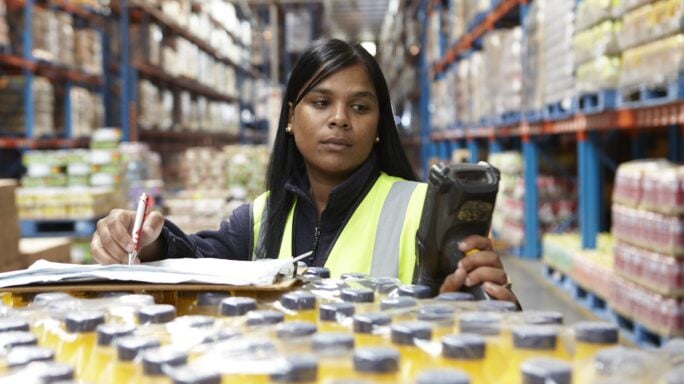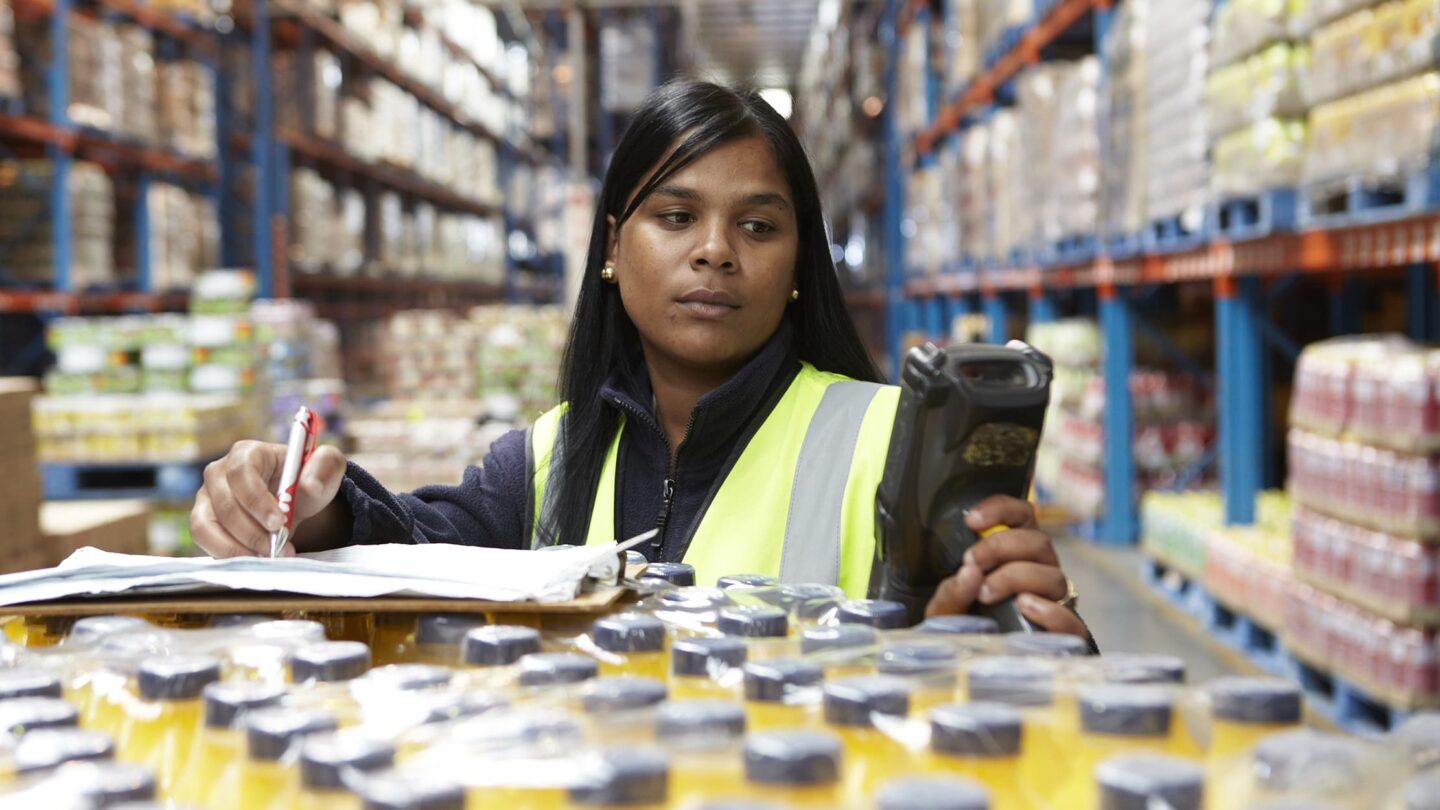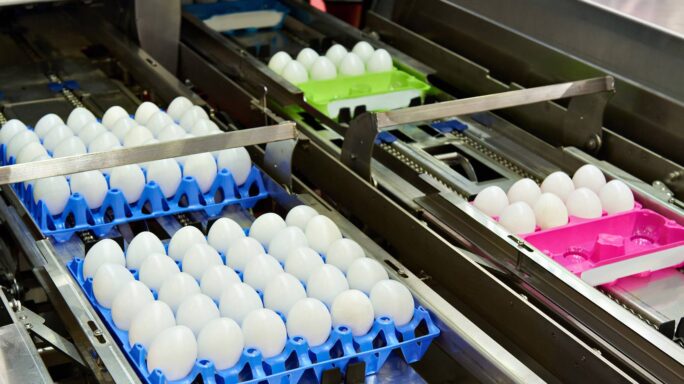Manufacturing a better way to reduce waste
Whether they’re building bicycles, making mobile phones or preparing
produce, manufacturing plants around the world all have one problem in
common:
How do you cut waste and other by-products from production processes?
Let’s find out
Let’s find out
Start animation
Stop animation
Stop animation
It’s estimated that at $8 trillion, manufacturing waste is equal to 10%
of the Gross World Product (GWP)—the combined gross national product of
all countries across the globe. Clearly, things need to change.
How much revenue in manufacturing is lost to waste?*
5%
5%
15%
15%
20%
20%
30%
30%
Take a guess—select your answer above
Not only is waste… well, wasteful, but it also increases
manufacturing costs, reduces profits and impacts the environment. In
short, the more that waste can be kept to a minimum, the better it is
for everyone.
With so much waste produced, there’s a strong focus on changing how
processes work. And establishing the right practices and systems to
minimize this excess. But how?
Waste isn’t something that can be avoided
Leftovers. Surplus. Unwanted. However you describe it, waste is an
unavoidable part of the manufacturing process. But that doesn’t mean it
can’t be minimized. Which is why many in the industry follow Lean
Manufacturing. Invented in the 1930’s, this method identifies any part of a
manufacturing process that doesn’t add value so that waste can be reduced,
and productivity increased. It has helped millions of companies for almost
100 years, enabling them to offer better products and services for their
customers. Fast forward to the 21st Century, and waste is more important
than ever—whether that’s due to greater awareness of environmental impacts
or the need to streamline budgets more efficiently.
Lean-ing into a better way of manufacturing
Lean Manufacturing has been around since the invention of radar, ballpoint
pens and cat’s eyes (the road reflectors, not the feline variety).
Digital tech is helping and takes Lean Manufacturing to another level. The
method now concentrates on the collection of tools, techniques, and
principles that have proven to be effective at driving out waste. As well
as providing the information needed to make sure that the entire
manufacturing process is as eco-friendly and sustainable as possible.
Whether it’s from different raw materials, the production lines they’re
made on or even the facilities they’re created in, more detailed data can
be collected than ever before. And better decisions can be made. But what
should modern manufacturers be looking for? And how can they analyze it
efficiently?
Seven types of waste
According to Deloitte, there are seven main areas of waste that
manufacturers should keep in mind when thinking about how to reduce
them.
This is a carousel showing numbers. Use the next, previous arrows to
navigate.
Overproduction
What is it?
There’s a fine line between making sure you have enough materials in stock
to create products, without them taking up too much room – which can stop
production of other products.
Why is it waste?
In a nutshell, it ties up your capital as you’ve spent it all on the wrong
materials—which prevents you from fulfilling other orders. All of that
excess sits gathering dust, as you don’t need to use it, while you have to
find ways to buy new raw materials to meet orders.
How Sage can help
Sage can keep overproduction to a minimum. By monitoring—and
keeping—production, purchasing and warehousing processes in line with
demand, you can control and manage your supply chain. Ensuring your
production is at the right level.
1 / 7
![]()
![]()
A case in point
Sage customer success stories
ARA Food Corp
In the first six months of using Sage X3, ARA Food Corp was able to reduce
plantain wastage by 1.5%. As they had the data to buy smarter than ever
before, stock and inventory waste dropped 10%—cutting costs and reducing
the space required to store fertilizer and other equipment.
“Since implementing X3, we are able to control the scrap of the plantain,
which is our biggest problem. And we’re able to control that by one and a
half percent, which is huge for us.”
Marta De Varona, VP of Administration and Finance, ARA Food Corp
Pharmonovia
Pharmanovia prides itself on managing its supply chain to get the stock in
the right place, at the right time, with the right shelf life remaining on
it.
“It’s not something we take lightly and Sage X3 is key to that. Maintaining
the system and keeping it online and live all the time is essential. We
have a 100% uptime rate, so the system’s never down.”
Alastair Hay, Chief Corp Dev Officer (CCDO), Pharmanovia
Subscribe to our Sage Advice Newsletter
Get our latest business advice delivered directly to your inbox.






